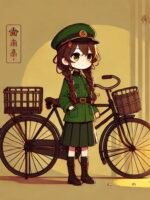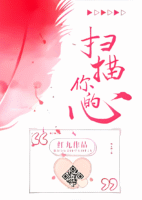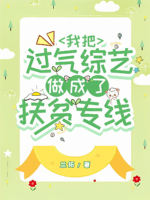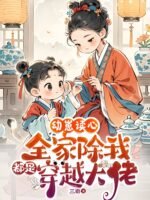Farm System C85
by MarineTLChapter 85
At 10 p.m. that night, Qin Yun and Xiang Qingchuan returned to the farm laboratory. The place was packed—everyone had come to see the results.
“How did it go?” Xiang Qingchuan asked directly.
A staff member held up a test tube. “This is the organic compound extracted from the benthic algae. It contains 32% FSA2.”
The farm’s lake was a beginner-level mission reward. Aside from the basic hydrogen and oxygen elements, it also contained a unique substance not found anywhere else on Shuilan Star. This substance not only boosted biological immunity and acted as a disinfectant and insect repellent, but also had strong acid resistance. After careful study, the researchers named it FSA2.
FSA2 was a newly discovered compound, but like other standard rewards, it could only be used within the farm’s boundaries. Over the past two years, the Biology Group had been studying its properties and searching for similar compounds. However, due to FSA2’s unique nature, progress had been slow.
Now, with a locust plague breaking out in the southeastern part of Zhongnan, Shaan Province, one researcher proposed: could FSA2 be used to kill locusts?
Previous studies had shown that FSA2 had a strong dissolving effect on aggressive acid rain compounds. Though it was just a suggestion, it opened up a new research direction for the experimental teams.
They placed locusts inside a greenhouse where crops had already been planted. The locusts began devouring the plants. The researchers then sprayed them with lake water mist. Half an hour later, all the locusts were dead, while the rice and corn remained in the same partially-eaten state.
The experimental data confirmed: the locusts were killed by FSA2, and the plants were completely unaffected.
The lake water from the farm could kill acid rain locusts—but there was one critical limitation: it couldn’t be taken outside the farm.
So the researchers turned their attention to finding FSA2 analogs. Over the past two years, they had already ruled out 300,000 species of terrestrial plants. Now, they were analyzing marine algae.
The ocean was even more abundant and mysterious than land, home to nearly ten thousand unknown species of marine flora and fauna. With the Algae Tree as a foundation, and after countless experiments combined with prior data, the researchers were fortunate enough to discover a deep-sea plant similar to red algae.
This deep-sea red algae grew to three meters long and twenty centimeters wide, found off the coast of Longxia. It was hard to detect, but with the global acid rain crisis disrupting marine ecosystems, and thanks to the presence of FSA2, this red algae had become even more vigorous than before.
Once they realized the potential of the deep-sea red algae, the Longxia Team immediately dispatched people to harvest it.
That afternoon, staff brought in twenty jin of red algae, and the farm research team immediately informed Xiang Qingchuan.
“How’s it looking now?” Xiang Qingchuan asked again, referring to the research on the Longxia deep-sea red algae.
“It’s similar to the Algae Tree cultivation—there’s a trace amount of FSA2,” a researcher replied, handing over a data report.
As biological research progressed, more and more countries were investing in marine biology. The deep-sea red algae was a native species to Longxia’s coastal waters and part of the global red algae phylum.
Countries around the world had analyzed deep-sea red algae before.
But due to limited research capabilities, they had only managed to analyze its basic structure—none had been able to detect FSA2. This breakthrough by the Biology Group was made possible thanks to the Algae Tree and the Seed Laboratory’s analytical equipment.
“We still don’t understand the world well enough,” said an older researcher.
The world was vast and complex. After a lifetime of study, they had only scratched the surface.
While deep-sea red algae could yield a substance similar to FSA2, it had a major drawback—it evaporated easily upon contact with air.
Over the next two days, the Biology Group focused on stabilizing the insecticide and testing various formulations. After a series of experiments, they finally developed a locust insecticide. In addition to the red algae extract, it contained dozens of chemical components like organophosphates and formate esters, each precisely measured.
The insecticide could be made into powder or liquid form.
On August 17, farm personnel returned to the greenhouse. Inside were one hundred adult locusts, busily chewing on corn stalks.
“Begin!” Xiang Qingchuan ordered.
A staff member took out a box of the new insecticide, diluted it with water according to the set ratio, and sprayed it into the greenhouse.
The locusts flew about wildly at first, then began to slow down… An hour later, they dropped to the ground, forming a thick layer of carcasses.
“They’re all dead.”
A staff member opened the greenhouse door. Thanks to the strictly controlled dosage, the insecticide was colorless, odorless, and nearly non-toxic to humans. Even if ingested accidentally, it wouldn’t be fatal.
Xiang Qingchuan carefully examined the locust corpses, then ran data analysis on the corn stalks. Finally, he announced, word by word, “Fengshan Insecticide—successfully developed!”
Research showed that this insecticide wasn’t just effective against locusts—it also worked remarkably well against rats, cockroaches, and other harmful pests. It was a high-quality, cutting-edge insecticide.
The Longxia deep-sea red algae was just one variety among many found in oceans around the world. Though it grew in deep waters, it wasn’t considered rare. With today’s damaged marine ecosystems, large quantities of red algae could be harvested using modern equipment.
On August 19, Longxia signed cooperation agreements with several national pesticide and chemical companies, launching a rapid red algae harvesting campaign.
“August 20, 302 villagers from Zhaojia Village in He Province gathered at the southeastern riverbank to burn brush and debris.”
“Longxia biological experts advise: locusts prefer to lay eggs in low-lying, waterlogged areas with vegetation. Local governments should begin preventative measures against locust outbreaks.”
…
While Longxia was busy harvesting red algae, the rest of the country wasn’t sitting idle either.
With the Chicken and Duck Army temporarily out of commission, the nation began organizing a second wave of grassroots self-rescue: finding locust egg-laying sites, removing egg clusters, and minimizing potential disasters.
…
“Village Chief, nothing here.”
“Keep looking ahead.”
…
Zhaojia Village was located in southeastern He Province. Since the heatwave began in July, many areas had experienced drought and cracked soil.
The village was only 200 kilometers from the nearest locust outbreak. With plenty of farmland and small rivers nearby, they knew the risk was high. As soon as they saw the news, Zhaojia Village decided to follow the recommendations and search for egg clusters—hoping to eliminate the locusts before they even hatched.






![Cannon Fodder Refuses to Be a Stepping Stone for His Cub [QT] Cover](https://marinetl.xyz/wp-content/uploads/2025/06/228114s_x16_drawing-143x200.png)



0 Comments